Calculate your total road trip budget by multiplying daily expenses ($150-200 per person) by the number of travel days, then add a 15% buffer for unexpected costs. Planning safe Ontario road trips becomes more manageable when you track every expense category, from fuel and accommodations to meals and activities.
Break down your daily spending into essential categories: 40% for accommodation, 25% for fuel, 20% for food, and 15% for activities and emergencies. Download offline maps and camping apps to reduce data costs while exploring Ontario’s scenic routes and hidden gems.
Set price alerts for gas stations along your route using apps like GasBuddy, and pre-book accommodations during off-peak seasons to secure rates up to 30% lower than peak prices. Pack a cooler with supplies from local markets to cut food costs while experiencing authentic Ontario flavors.
This strategic approach to road trip budgeting transforms your adventure from a financial concern into an exciting journey through Ontario’s diverse landscapes.
Pre-Trip Financial Planning
Setting Your Total Budget
Planning your total road trip budget starts with two key factors: how long you’ll be traveling and your preferred travel style. A good rule of thumb is to allocate $150-200 per day for a comfortable trip in Ontario, but this can vary significantly based on your choices.
Start by mapping out your trip duration and multiply it by your daily budget estimate. For a week-long adventure, you might want to set aside $1,000-1,400 as a baseline. Remember to add a 15-20% buffer for unexpected expenses – trust me, they always pop up!
Consider your travel style: are you a camping enthusiast happy with simple meals, or do you prefer hotels and restaurants? Camping can lower your daily costs to around $75-100, while hotel stays and dining out might push it to $250 or more.
Pro tip: Break down your budget into categories: accommodation (35%), food (25%), fuel (20%), activities (15%), and miscellaneous (5%). This helps you allocate funds realistically and track expenses better. For longer trips, consider setting aside some “treat yourself” money for those special experiences you discover along the way.
Remember to factor in seasonal variations – summer prices in popular Ontario destinations can be significantly higher than shoulder season rates.
Creating a Flexible Daily Allowance
Creating a realistic daily allowance starts with breaking down your expenses into essential and flexible categories. For essentials, budget around $50-75 per person for meals, $10-15 for snacks and drinks, and $30-40 for fuel (depending on your vehicle’s efficiency). Then, add a buffer of $50-100 daily for unexpected costs or spontaneous activities – trust me, you’ll want to try that amazing maple syrup farm you discover along the way!
Pro tip: Keep track of your spending for the first few days to adjust your budget accordingly. I’ve found that expenses can vary significantly between urban areas like Toronto and smaller towns in Northern Ontario. For instance, while you might spend more on attractions in the city, you’ll likely save on meals in rural regions.
Create separate “envelopes” (physical or digital) for different expense categories: meals, activities, fuel, and emergencies. This helps you stay organized and ensures you’re not accidentally dipping into tomorrow’s adventure fund. I always set aside an extra 15% of my total budget as a contingency fund – it’s saved many road trips from unexpected situations like needing a sudden tire change or discovering a must-visit attraction that wasn’t in the original plan.
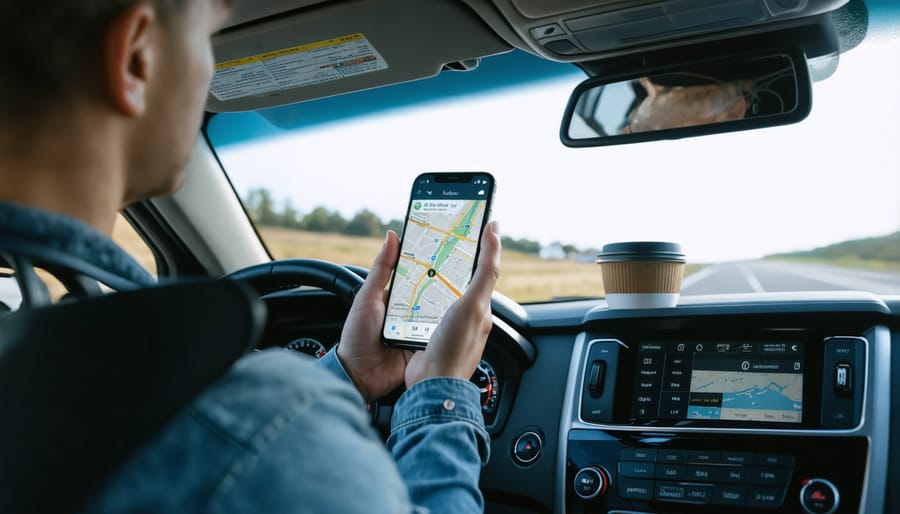
Major Expense Categories
Vehicle Expenses
Fuel costs typically make up the largest portion of your vehicle expenses during an Ontario road trip. Current gas prices vary significantly across the province, with northern regions often seeing higher rates. Pro tip: use apps like GasBuddy to find the best fuel prices along your route, and fill up in major cities where prices tend to be more competitive.
Before hitting the road, schedule a maintenance check-up for your vehicle. This preventive measure, while adding to your initial budget, can save you from costly roadside repairs. Basic maintenance should include oil changes, tire rotation, and brake inspections. For winter road trip considerations, factor in the cost of winter tires and antifreeze.
If you’re renting a vehicle, compare rates across multiple agencies and book in advance for better deals. Consider the fuel efficiency of your rental choice – while that rugged SUV might seem perfect for adventure, a more economical vehicle could save you hundreds in fuel costs. Don’t forget to factor in insurance coverage, whether through your credit card, personal auto policy, or the rental agency.
To reduce fuel consumption, maintain a steady speed on highways and avoid excessive idling. Pack light to improve fuel efficiency, and consider using a roof box only when necessary, as it can increase fuel consumption by up to 20%.
Accommodation Options
Ontario offers diverse accommodation options to suit every budget and comfort level. Camping remains the most economical choice, with provincial park sites typically ranging from $35-50 per night. Many parks offer electrical hookups and comfort stations, making it an excellent option for both tent campers and RV enthusiasts. Pro tip: consider purchasing a seasonal park pass if you plan multiple stays.
Hotels and motels vary significantly by region and season. Expect to pay $120-200 per night in major cities like Toronto or Ottawa, while smaller towns often offer rooms from $80-120. Budget-conscious travelers should look for mid-week deals and shoulder season rates, which can save up to 40% on accommodation costs.
Alternative lodging options are gaining popularity and often provide unique experiences at competitive prices. Airbnb and cottage rentals typically range from $90-250 per night, with the advantage of kitchen facilities to help reduce food costs. For adventurous travelers, hostels in cities like Toronto and Ottawa offer dorm beds from $30-45 per night, while private rooms cost around $80-100.
Consider mixing accommodation types throughout your trip to balance comfort and costs. For example, splurge on a nice hotel in the city, then offset it with a few nights of camping in beautiful provincial parks. Remember to book well in advance, especially during peak summer months and fall color season, to secure the best rates and availability.
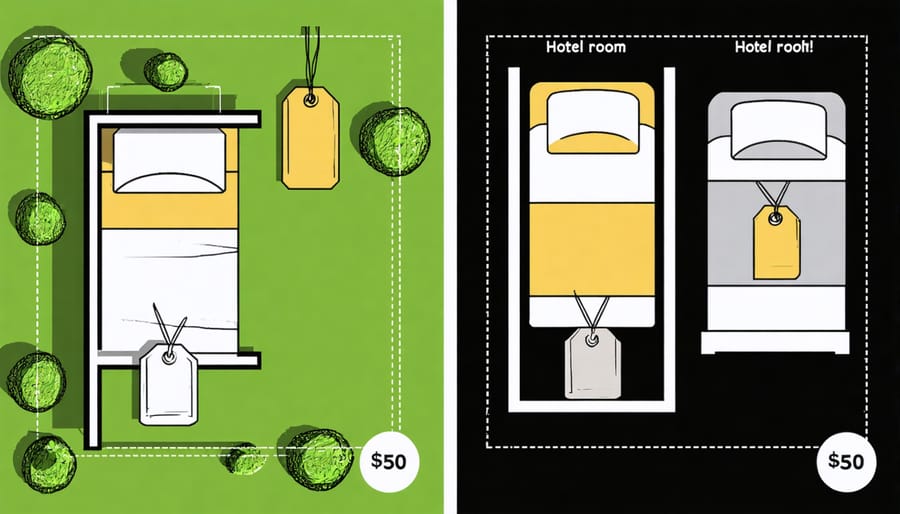
Food and Dining
One of the biggest expenses during a road trip can be food, but with smart planning, you can save significantly while still enjoying local flavors. The key is striking a balance between grocery shopping and dining out. Start by packing a cooler with essentials like sandwich materials, snacks, and beverages. Many Ontario parks have picnic areas where you can experience Ontario like a local while enjoying a packed lunch amid beautiful scenery.
Plan to stock up at grocery stores in larger towns, where prices tend to be more reasonable. Consider buying local seasonal produce from farmers’ markets – it’s often cheaper and fresher than supermarket options. For cooking, look for accommodations with kitchen facilities, or pack a portable camping stove if you’re comfortable with outdoor cooking.
When it comes to restaurants, limit dining out to one meal per day, preferably lunch when prices are typically lower. Research local diners and family-owned establishments rather than tourist spots for better value. Many Ontario towns have fantastic food trucks offering delicious meals at budget-friendly prices. Don’t forget to check community bulletin boards and local apps for daily specials and happy hour deals.
Pro tip: Keep a reusable water bottle handy and fill up at rest stops instead of buying bottled water. This small change can save you money while being environmentally conscious.
Money-Saving Strategies
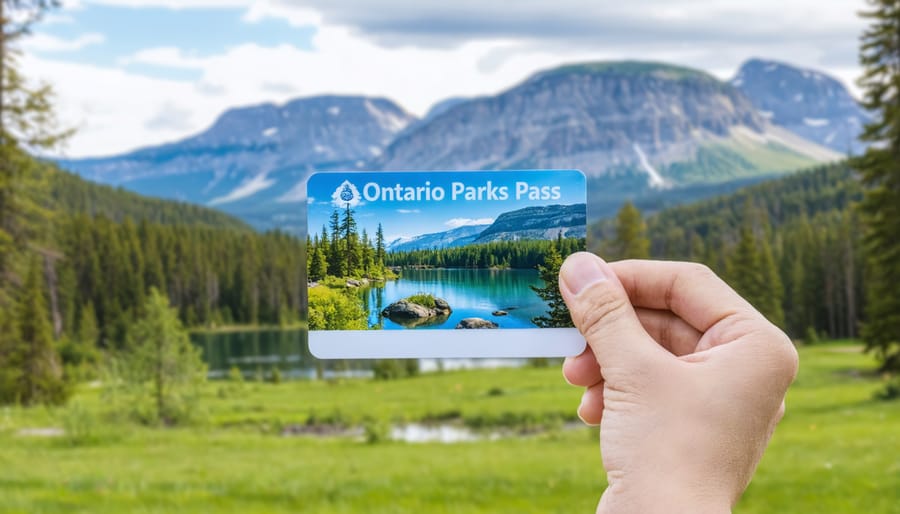
Ontario Parks Pass Options
Planning to explore Ontario’s beautiful parks? Let’s break down your pass options to help you save money in Ontario parks. The Daily Vehicle Permit is perfect for spontaneous adventures, ranging from $12.25 to $21 depending on the park and season. However, if you’re planning multiple visits, consider the Seasonal Pass at $175 – it pays for itself in just 8-10 visits!
For frequent travelers, the Summer Vehicle Permit ($125) covers your park entry from April to November. Camping enthusiasts should check out the Ontario Parks Annual Pass, which includes both day-use and overnight privileges. Pro tip: purchase your pass during the off-season for extra savings, and remember that most passes are transferable between vehicles registered to the same household.
Multi-park passes also grant you access to special events and guided hikes throughout the year. Consider splitting a seasonal pass with family members to maximize value – just make sure to read the sharing guidelines carefully!
Group Cost-Sharing Tips
Managing group expenses doesn’t have to be a headache! One of the simplest approaches is to use expense-tracking apps like Splitwise or Tricount, which automatically calculate who owes what. Before hitting the road, have a quick group chat to agree on how you’ll handle shared costs – this prevents awkward money conversations later.
Consider appointing a “treasurer” for the trip who can keep track of major expenses like gas and accommodation. They can collect a predetermined amount from each person at the start of the journey to create a group fund. Pro tip: add a 10% buffer to your estimated costs to cover unexpected expenses.
For fuel costs, either rotate who fills up the tank or keep all gas receipts and split them equally at the end. When it comes to meals, you can either take turns paying or keep a running tab. For grocery stops, divide the bill by the number of people or have each person buy specific items.
Remember to factor in vehicle-related costs if someone’s using their personal car. A fair approach is to split vehicle expenses like oil changes or emergency repairs among all travelers since everyone’s contributing to the wear and tear.
Lastly, keep all receipts in a designated envelope or take photos of them – you’ll thank yourself when it’s time to settle up!
Local Deals and Discounts
Ontario is full of hidden deals and regional promotions that can make your road trip more affordable. Many tourist attractions offer seasonal discounts, especially during shoulder seasons like early spring and late fall. Keep an eye out for tourism packages in different regions – places like Blue Mountain and Niagara Falls frequently bundle accommodations with attractions at significant savings.
Download apps like Groupon and check local tourism websites before your trip. Many Ontario municipalities have visitor cards or passes that offer discounts on multiple attractions. For instance, the Toronto CityPASS can save you up to 40% on major attractions if you’re planning to explore the city.
Gas prices can vary significantly across Ontario. Use apps like GasBuddy to find the cheapest fuel along your route, and remember that prices tend to be lower in smaller towns compared to major highways. Consider timing your fill-ups accordingly.
For accommodation savings, look for mid-week specials at hotels and resorts. Many Ontario parks offer shoulder season camping rates, and some tourism regions run special promotions during their “quiet” seasons. Sign up for regional tourism newsletters – they often share exclusive deals and last-minute offers that aren’t advertised elsewhere.
Local farmers’ markets and community events often offer better value than tourist spots, plus they provide a more authentic Ontario experience. Don’t forget to check Ontario’s tourism website for current promotions and regional travel incentives.
Digital Tools and Apps
Expense Tracking Apps
Keeping track of expenses during a road trip doesn’t have to be a headache, thanks to several user-friendly apps designed specifically for travelers. Splitwise is a fantastic option for group trips, allowing you to easily divide costs among friends and family. Simply input expenses as you go, and the app automatically calculates who owes what, eliminating awkward money conversations around the campfire.
For personal expense tracking, Mint offers comprehensive budget management with real-time updates and category-specific spending insights. It’s particularly helpful for monitoring fuel costs and food expenses, two major road trip budget items.
TripIt’s pro version includes a helpful expense tracking feature that organizes all your travel-related costs in one place. For the tech-savvy traveler, Trail Wallet is designed specifically for travelers, with an intuitive interface and the ability to work offline – perfect for those remote Ontario destinations where cell service might be spotty.
My personal favorite is GasBuddy, which not only tracks fuel expenses but also helps you find the cheapest gas stations along your route, potentially saving you significant money during long-distance drives through Ontario.
Money-Saving Travel Apps
Your smartphone can be your best friend when it comes to saving money on the road. GasBuddy is a must-have app that helps you find the cheapest fuel prices along your route – particularly helpful given Ontario’s varying gas prices between regions. For accommodations, Hotwire and Hotels Tonight offer last-minute deals that can save you up to 60% on room rates, perfect for spontaneous stops.
Looking to explore attractions without breaking the bank? Download Groupon and check for local deals in the areas you’ll be visiting. Many Ontario attractions offer digital coupons through the app. The CAA app is another money-saver, providing member discounts at restaurants, hotels, and attractions across the province.
For parking in urban areas, apps like Green P and SpotHero help you find the most affordable parking options. If you’re camping, the Parks Canada app offers real-time availability and lets you book sites directly, often at better rates than third-party platforms.
Don’t forget about reward apps like PC Optimum, which lets you earn points on gas and snacks at Esso stations throughout your journey. Every dollar saved is another dollar for adventures!
Planning a budget-friendly road trip through Ontario doesn’t have to be overwhelming. By following the strategies we’ve discussed – from careful pre-trip planning to smart fuel management and accommodation choices – you can create an amazing journey that won’t break the bank. Remember to track your expenses using apps or spreadsheets, build in a buffer for unexpected costs, and take advantage of Ontario’s wealth of free attractions and natural wonders.
The key to successful road trip budgeting lies in finding the right balance between comfort and cost-savings. Pack smart, plan your routes efficiently, and don’t forget to explore money-saving opportunities like off-season travel and loyalty programs. Whether you’re camping under the stars in Algonquin Park or exploring urban attractions in Toronto, there’s always a way to make your adventure more affordable.
Most importantly, don’t let budget constraints dampen your spirit of exploration. With proper planning and our insider tips, you can create unforgettable memories while staying within your means. Happy travels, and enjoy the beautiful roads of Ontario!

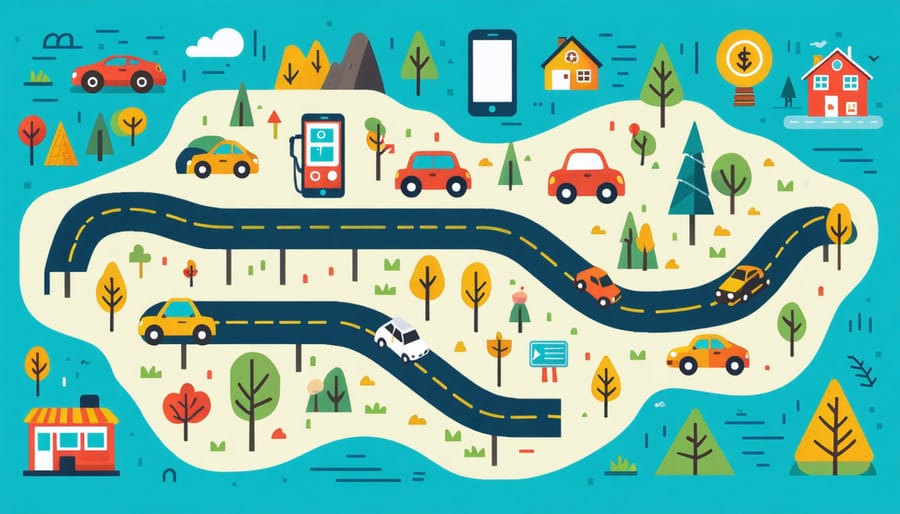


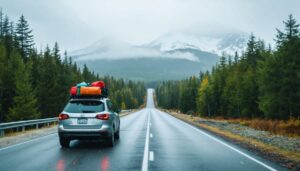



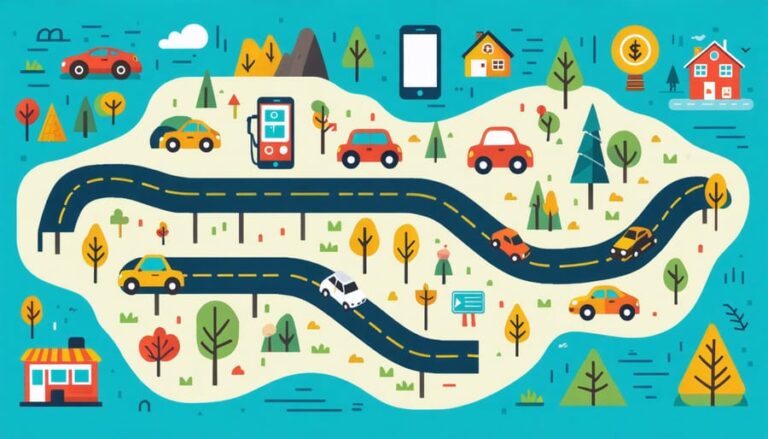
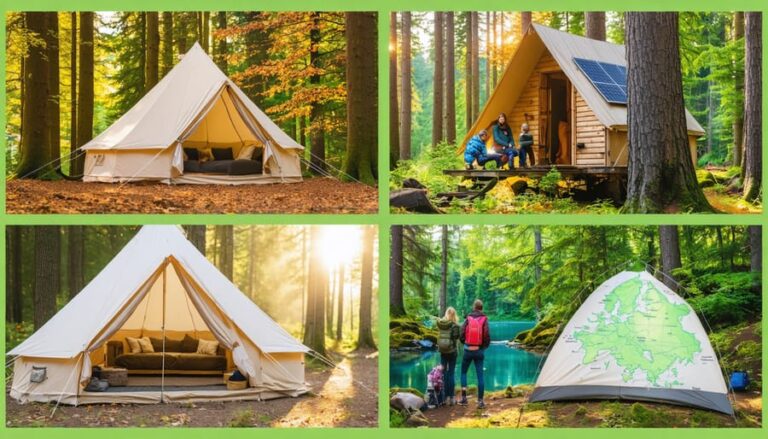




+ There are no comments
Add yours